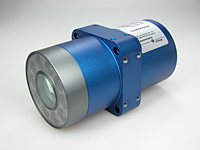Color Sensors
The color sensors of the SI-COLO series operate with the 3-color-range method. As a light source they use pulsed white-light LEDs, the luminescence color sensors use UV LEDs. Modulation is done with 30 kHz or 100 kHz, respectively, and the lock-in-technology guarantees an extremely high insensitivity to outside light.
Various types of color sensors were specifically designed for the respective applications, so that for example in case of high gloss objects the color also can be detected with highest reliability by using polarisation filters (type -POL).
The compact optical-fiber versions with corresponding optical attachment units (type -FIO) are ideal for applications with limited available space for installation. If, on the other hand, the application requires an operating distance of 1000 mm, this can be covered by a version with integrated optical unit and super-bright ring lighting (type -FCL).
With the SI-COLO3-Scope or SI-COLO4-Scope Windows® user interface, different evaluation modes can be easily selected for the color sensors of the SI-COLO3 or SI-COLO4 series. Both the raw data and the calculated color values are displayed in graphical and numerical form. Teaching can be performed with the software, with the PLC, or directly with the button that is integrated in the sensor.
Special sensors for color gloss detection:
The SI-COLO-GD color gloss sensor detects both the color and the gloss of an object. The color and gloss information of an object hereinafter is referred to as a vector. A surface only is recognised if its vector data match a previously taught teach vector.

